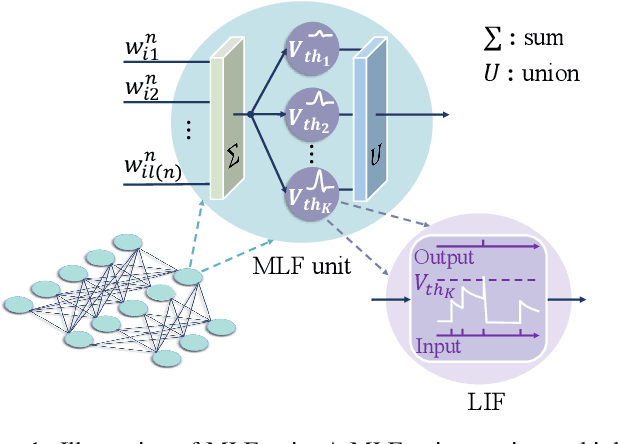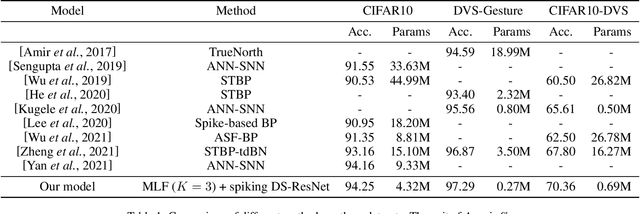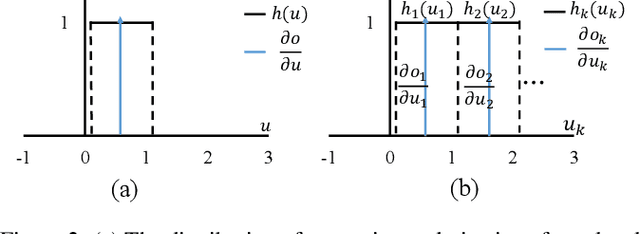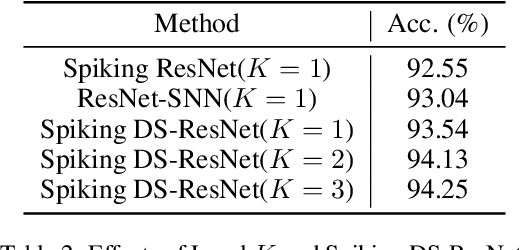Multi-Level Firing with Spiking DS-ResNet: Enabling Better and Deeper Directly-Trained Spiking Neural Networks
Paper and Code
Oct 12, 2022



Spiking neural networks (SNNs) are bio-inspired neural networks with asynchronous discrete and sparse characteristics, which have increasingly manifested their superiority in low energy consumption. Recent research is devoted to utilizing spatio-temporal information to directly train SNNs by backpropagation. However, the binary and non-differentiable properties of spike activities force directly trained SNNs to suffer from serious gradient vanishing and network degradation, which greatly limits the performance of directly trained SNNs and prevents them from going deeper. In this paper, we propose a multi-level firing (MLF) method based on the existing spatio-temporal back propagation (STBP) method, and spiking dormant-suppressed residual network (spiking DS-ResNet). MLF enables more efficient gradient propagation and the incremental expression ability of the neurons. Spiking DS-ResNet can efficiently perform identity mapping of discrete spikes, as well as provide a more suitable connection for gradient propagation in deep SNNs. With the proposed method, our model achieves superior performances on a non-neuromorphic dataset and two neuromorphic datasets with much fewer trainable parameters and demonstrates the great ability to combat the gradient vanishing and degradation problem in deep SNNs.
 Add to Chrome
Add to Chrome Add to Firefox
Add to Firefox Add to Edge
Add to Edge